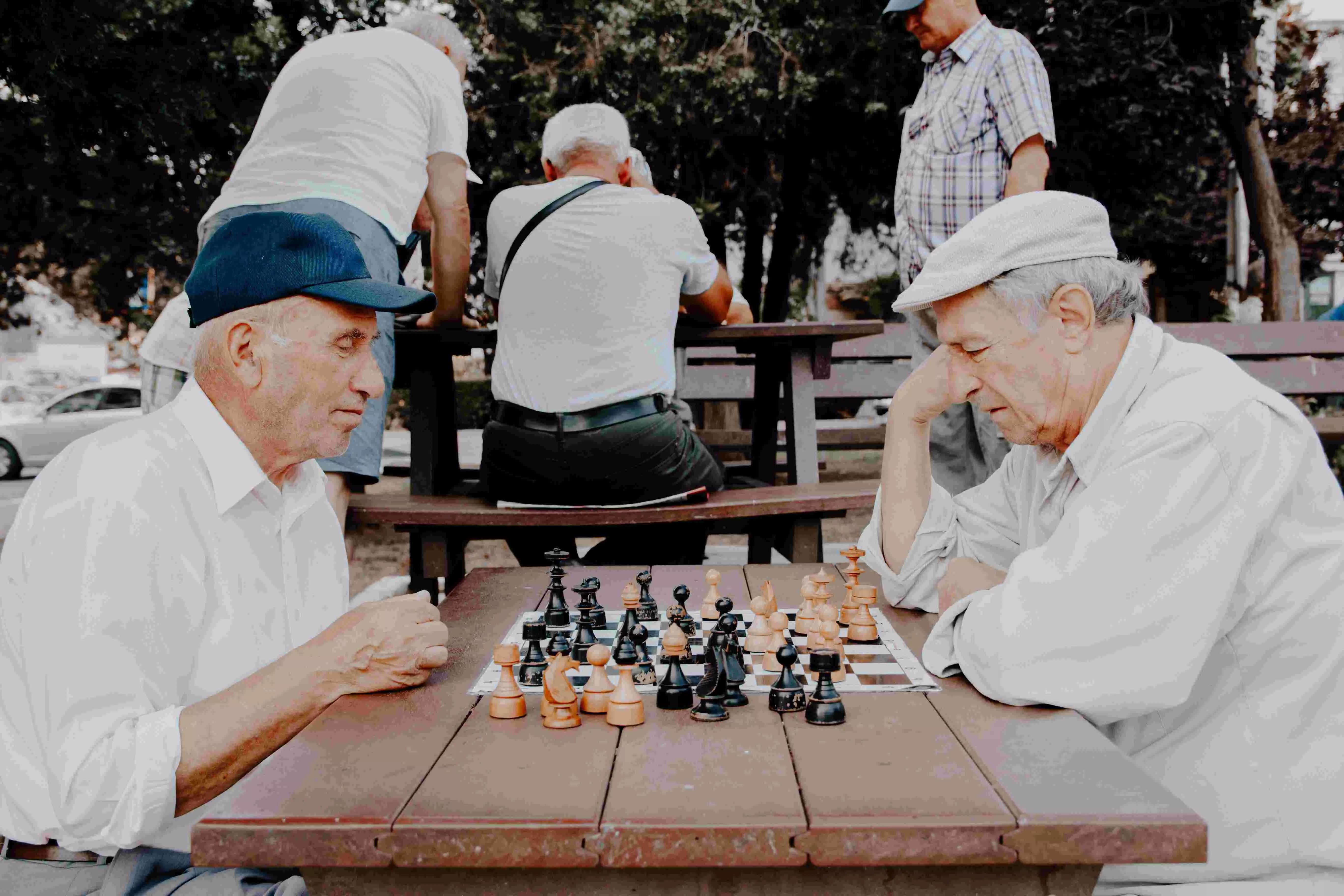Talking Shop: The Blue Zones
Along the Adriatic Sea and in Japan’s Okinawa Prefecture, among some others, there are people who are astounding the whole world with their very longevity

“People say life is short and
that you could get hit by a bus
at any moment. Bullshit. Life
is long. You’re probably not
gonna get hit by a bus. But
you will have to live with
the choices you have made.”
― Chris Rock
Welcome to the ‘Blue Zones’, stretches of coastland that run along the Adriatic Sea, with the same phenomenon being witnessed in parts of Japan, such as the Okinawa Prefecture. Sure, there are some other places on Earth that qualify to be in the Blue Zones category, but these two are standouts, for most people here live to be over 100 years old, while some thumb their noses at mortality and live to be 130 years or even longer. What makes them so different? It is clean air, cleaner eating, a healthy lifestyle and non-existent stress. It is also drinking wine, and these people are astounding the world with their longevity and indestructible physical and mental prowess, an undying penchant for a long, healthy life.
Blue Zones are a non-scientific term given to regions that are home to some of the world’s oldest people. Globally, five geographies have been identified—Icaria in Greece where people eat a Mediterranean diet rich in olive oil, red wine and homegrown vegetables; Ogliastra in Italy, home to some of the oldest men in the world, living high in the mountains, working on farms and drinking lots of red wine; Okinawa in Japan, home to the world’s oldest women, who eat soy-based foods and practice Tai Chi, a meditative exercise; Nicoya in Costa Rica, where the diet is based around beans and corn tortillas, with people performing physical jobs into old age with an innate sense of life purpose; and Loma Linda in California, where people are religious, strict vegetarians living in tight-knit communities. Ahem, all drink wine.
The secret to a long and healthy life has been revealed by a few of the 8 billion people living on Earth.
Rest of the world
The statistics are not inspiring. In fact, they are depressing and alarming, getting worse over the last two-three decades, more so after the novel Coronavirus pandemic all but maimed our lives. Let’s begin with the United States, the only superpower in the world, which has reported that life expectancy at birth declined from 2020 to 2021, according to data from the CDC’s National Centre for Health Statistics. That decline, from 77 to 76.1 years, took US life expectancy at birth to its lowest level since 1996. The 0.9-year drop in life expectancy in 2021, along with a 1.8 year drop in 2020, was the biggest two-year decline in life expectancy since 1921-1923.
Let’s move on to Europe, where lifespan is falling across the board. The country with the highest life expectancy at birth now is Spain, with an average of 83.3 years, followed by Sweden (83.1 years), Luxembourg and Italy (both 82.7 years), while the lowest lifespan is predicted in Bulgaria (71.4 years), Romania (72.8 years) and Latvia (73.1 years).
Do remember that this fall in the average lifespan in the US and parts of Europe comes despite tremendous improvements in medical technology and healthcare facilities. That’s also because lifestyle factors kick in and result in temporal distortions. An increase in smoking rates led to stagnating male life expectancies in the 1950s and 1960s, but life expectancy picked up after smoking and heavy alcohol consumption declined. Today, both are on the rise again, as are obesity, lower levels of exercise and high levels of stress. Ironically, increased instances of suicide are also impacting average lifespan figures.
As a soliloquy, Lesotho in Southern Africa is the worst off on the lifespan front, an average of 55.65 years.
Closer back home
This is again not good news, I am afraid, though there is a redoubtable silver lining, in that for the last four years running, lifespans in India have increased by 0.33 per cent year on year, touching 70.42 years in Year 2022. Overall, for a nation of our size, population and technological growth, these numbers are barely sufficient to bring any modicum of satisfaction or gratification. For there is a grim other side to this story, as to why lifespan growth numbers are so miniscule, despite rapid strides in medical science and healthcare amenities. Apparently, it all boils down to runaway stress levels and inter-related depression.
Rising unemployment, lower salaries, people forced to take menial jobs, family issues and continuing economic insecurity have also triggered a jump in suicide rates, especially after demonetization, the introduction of the Goods and Services Tax (GST) and the COVID-19 pandemic. As many as 12 people for every lakh of population in India are committing suicide. The National Crime Research Bureau recorded 1.5 lakh suicide deaths in 2020, against 1.39 lakh in 2019. Between 2020 and 2021, there was a 7.1 per cent increase. In 2021, 1.64 lakh people took their lives, according to NCRB. Startlingly, the rate of suicide amongst Indian men is 2.5 times that among women, according to the Indian Institute for Population Sciences. However, more teenage girls commit suicide than boys in the same age category.
The world, perhaps, need to think like artists and other creative people. Norman Rockwell once said: “The secret to so many artists living so long is that every painting (or creation) is a new adventure. Thus, they’re always looking ahead to something new and exciting. The secret is not to look back.” Amen.
Ode to a Mahatma
No column on today’s date, 2 October, can be complete without paying homage to the man who was instrumental in giving us the life that we live and enjoy today; Mohandas Karamchand Gandhi—the learned barrister who gave up the high life and fancy clothing to adorn a single piece of home-spun cloth, only to take on the oppressive Britishers and march India along the road to freedom on 15 August 1947. This anti-colonial nationalist and political ethicist employed non-violent resistance to lead the campaign for independence. His actions and words have since inspired movements for civil rights and freedom across the world. The honorific ‘Mahatma’ (Sanskrit, meaning ‘great-souled, venerable’), was first applied to him in South Africa in 1914 and is now used throughout the world.
Few would know of all the efforts made by the Mahatma and his followers to take on the might of the British and force them to take notice. His first major campaign for freedom came in 1917 with the Champaran agitation in Bihar. The very next year, in 1918, Kheda in Gujarat was hit by floods and famine, and the peasantry was demanding relief from harsh British taxes—it was the Mahatma who moved his headquarters to Nadiad and fought the Britishers tooth and nail. In 1919 came the Khilafat Movement, which instilled political cooperation from Muslims in the fight against British imperialism; few know that this agitation greatly simmered down differences between Hindus and Muslims in the country.
Soon after came the Non-Cooperation Movement, which expanded non-violent non-cooperation to include the Swadeshi Policy, the boycott of foreign-made goods, especially British. Gandhi was arrested in 1922 for spearheading this. And finally, the Dandi March from 12 March-6 April 1930, where he and 78 volunteers marched 388 kilometres from Ahmedabad to Dandi in Gujarat to make salt, with the intention of circumventing the draconian salt laws. These are but a mention of his contribution and guidance that got India independence from the tyrannical British Raj—such was the Mahatma.
On his 154th Centenary, we pay our heartfelt and humble respects to Mohandas Karamchand Gandhi for his struggles and efforts. The Mahatma is gone. Long live the Mahatma (in each one of us).
The writer is a veteran journalist and communications specialist. He can be reached on [email protected]. Views expressed are personal



